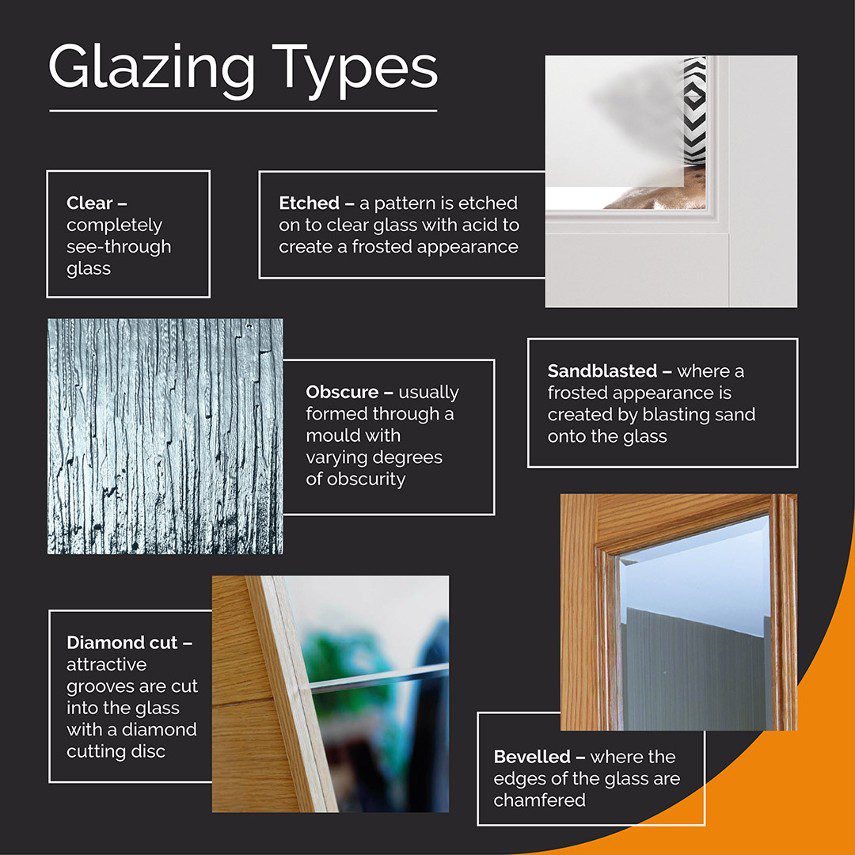Your Guide to Understanding Door Terminology – part one
When you’re browsing through door catalogues or looking at information in showrooms, it’s sometimes hard to picture what is meant by some of the more technical language. What is a ‘semi-solid core’? Or ‘beading’? Because we want our customers to have the best knowledge possible before taking the plunge and purchasing one of our doors, here’s a handy and comprehensive guide to all the door-related terms you’re likely to come across. After all, knowledge is power!
Core construction
The ‘core construction’ of a door is the term used to describe, in essence, how it’s made on the inside. In other words, if you were to cut a door in half (which we don’t recommend by the way!), what would you find? This material is the ‘core construction’. It will generally be made from one of the following:
Standard core: If a door has a ‘standard core’ it will be lighter in weight than others which are more solid internally. That’s because the core structure is part hollow, part cellular, as you can see in this image.
Semi-solid core: As the name suggests, this type of door is partly solid, and partly cellular in its internal make-up.
Solid core: This type of door is the heaviest kind, due to its solid centre. The components used in a solid core door are usually made from timber.
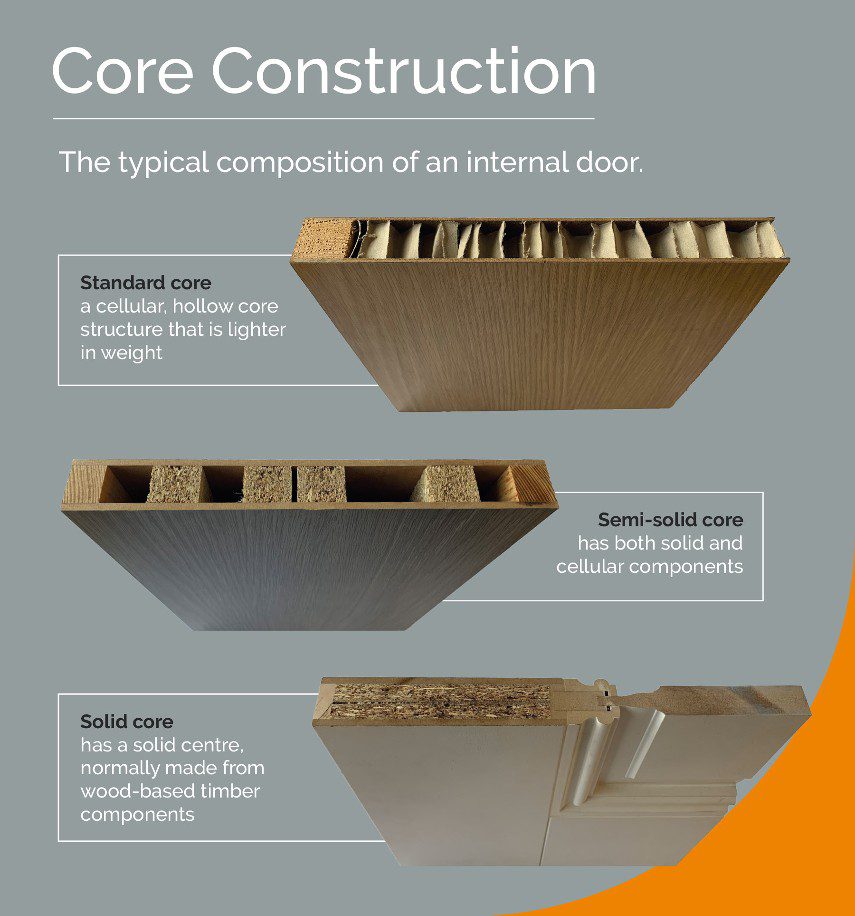
Glazed Door Construction
Glazed doors are such an important feature of many interiors these days. They’re great for allowing light to flood into a space, and can also offer some lovely design interest by way of beautiful panelling. There is a lot of choice these days when you want to go for internal doors with glass so it’s worth knowing what the different terms mean.
Aperture – This word just means ‘opening’ and it’s the open area of the door where the glass goes.
Beading – If you look carefully at a glazed door, there will often be special mouldings around the pane of glass, as an additional feature. These can either be raised up, or ‘flush’ – which means they are level with the door.
Safety glass – It’s very important that the glass in a glazed door won’t cause any injury if an accident happens and it is smashed. This is why doors are fitted with safety glass, which will break in such a way that it won’t cause sharp shards to splinter across a room. Safety glass has been specially treated, either by being tempered or laminated.
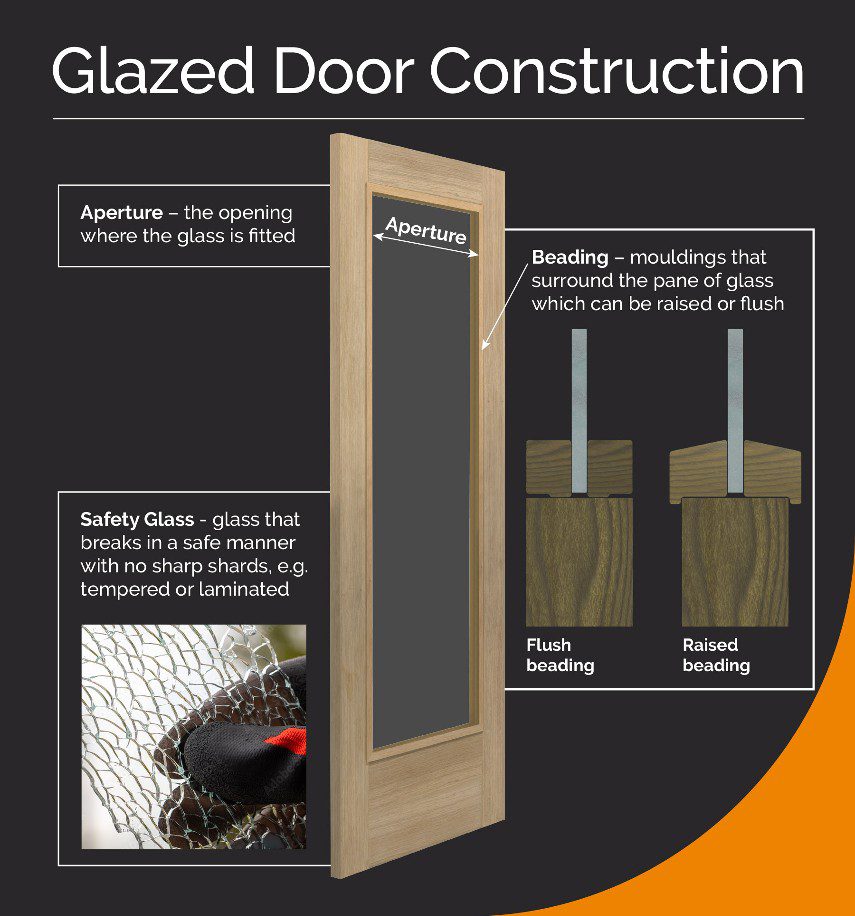
Fire Doors
Fire doors are required in certain areas of a home in case the worst happens and fire breaks out. A fire door is constructed so that it will resist flames and smoke for a certain period of time, allowing residents in a home to get to safety if they need to.
FD30/EI30 – This is a fire door which has undergone tests proving it can resist fire for more than half an hour.
CERTIFIRE approved – Is a fire door that has third party certification proving it will perform as promised in the event of a fire. CERTIFIRE accreditation also proves a door’s quality and its traceability too.
Intumescent strips or seals – This material is fitted to a fire door or it’s frame. When exposed to heat, these strips will swell which means that any gaps around the door are closed. This is an essential requirement and details of how to fit a fire door is detailed in its fire assessment report.
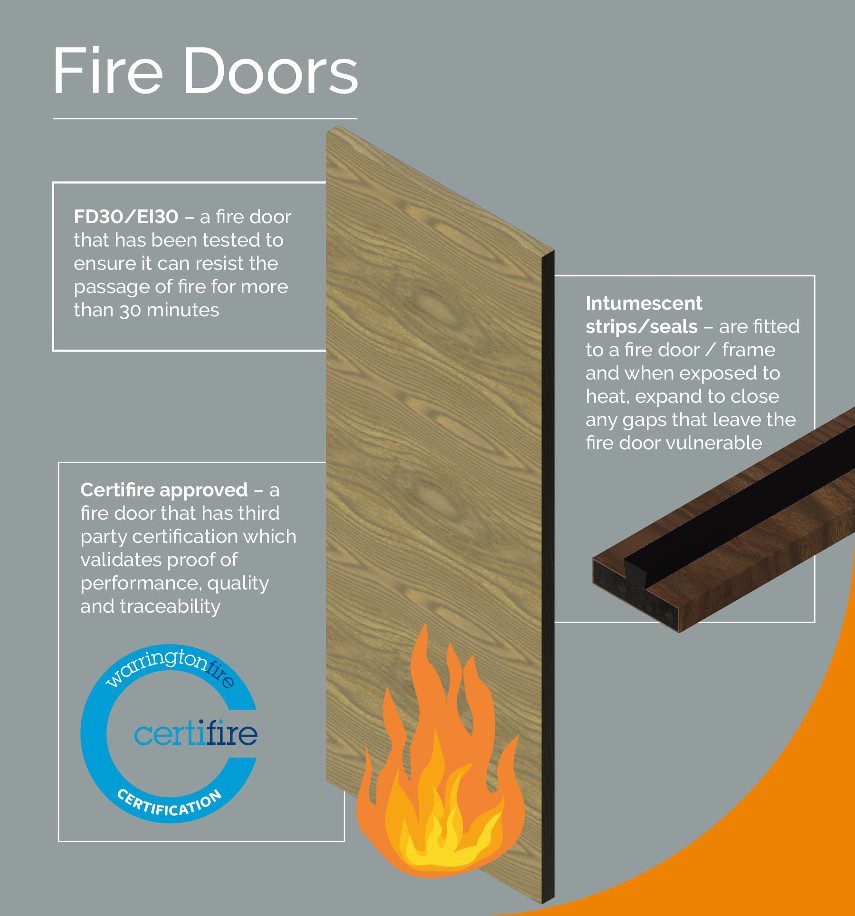
Door Construction
It can also be useful to know how a door is actually made, so here are a couple of useful terms.
Stile and rail – This type of construction is a bit like a piece of woven cloth. It’s made from vertical stiles and horizontal rails in a frame and panel construction.
Lipping – Sometimes doors will have an extra timber piece which makes the edge. If needs be, it can be cut down slightly to fit specific door openings.
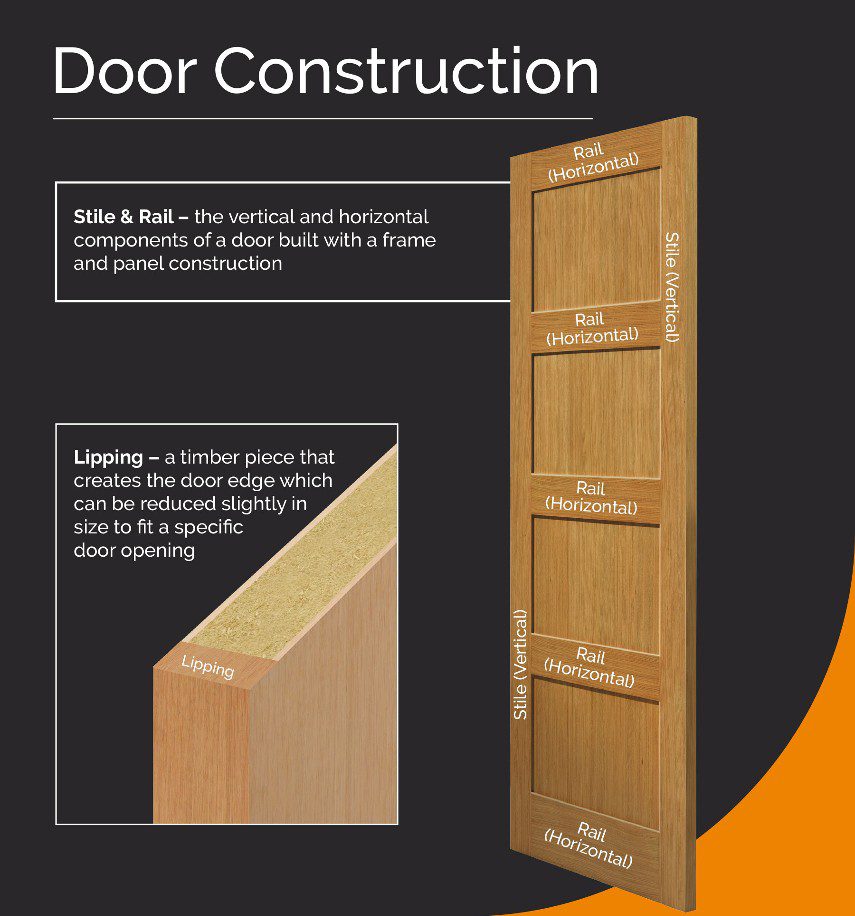
Glazing Types
Glazed doors are a great option for spaces in the home where you would like to let light in, and they also have a lovely aesthetic appeal in their own right. Sometimes you might want the benefits of a glazed door but still need some privacy too, for example, in a bathroom. Here are the main types to be aware of:
‘Clear’ – Is glass that has full, clear opacity – in other words, you can see straight through it!
‘Etched’ – Is a pattern etched onto the surface of glass. This is done with acid and it creates a frosted appearance.
‘Sandblasted’ – Glass that also has a frosted appearance which is created by blasting sand on to the glass.
‘Obscure’ – This type of glass is usually formed through a mould with varying degrees of obscurity.
‘Bevelled’ – A ‘bevelled’ edge is chamfered i.e. it slopes downwards.
‘Diamond cut’ – Attractive grooves are cut into the glass with a diamond cutting disc.
